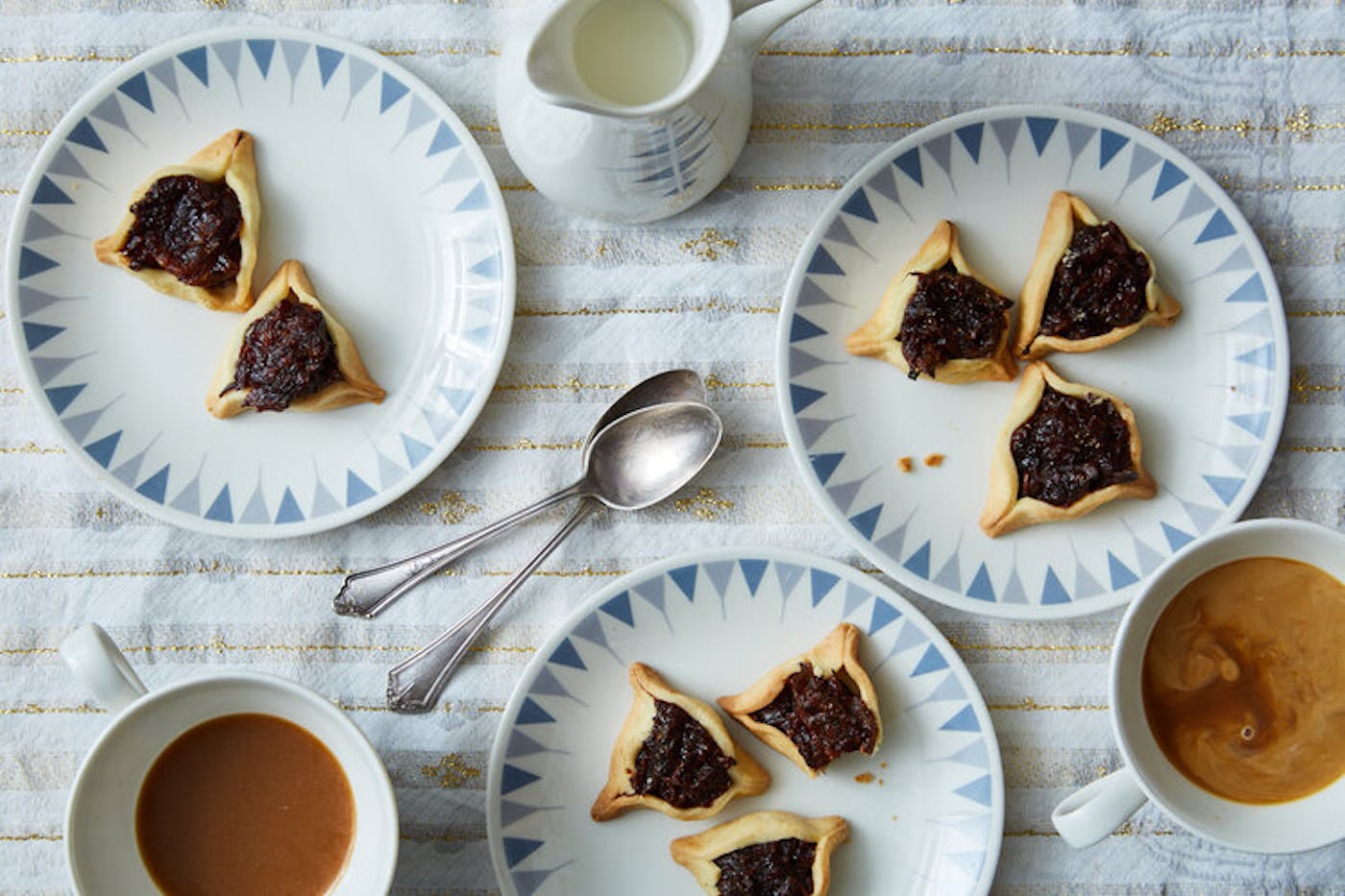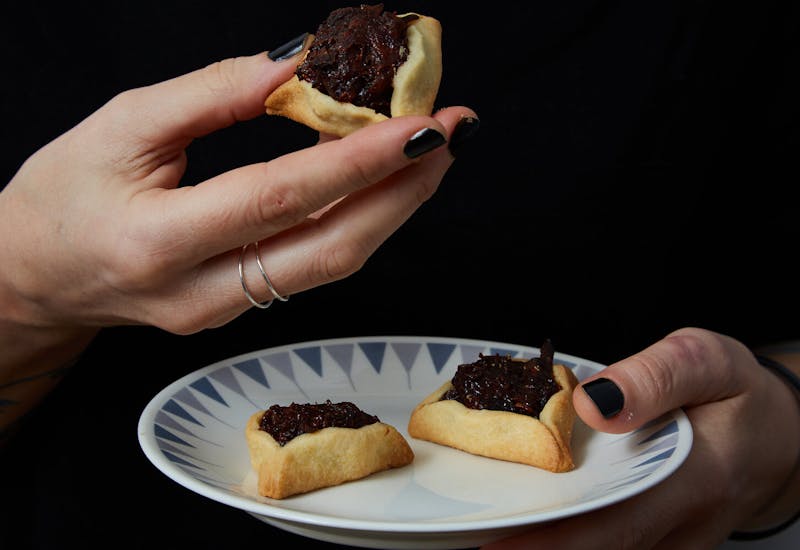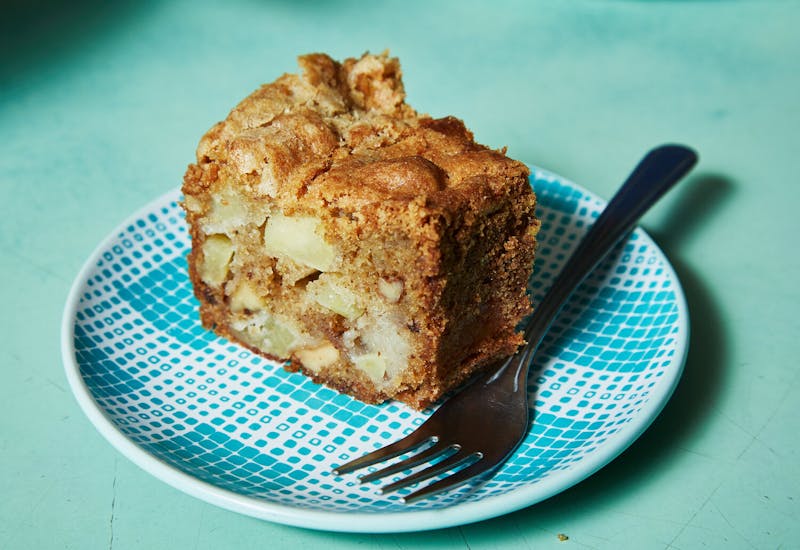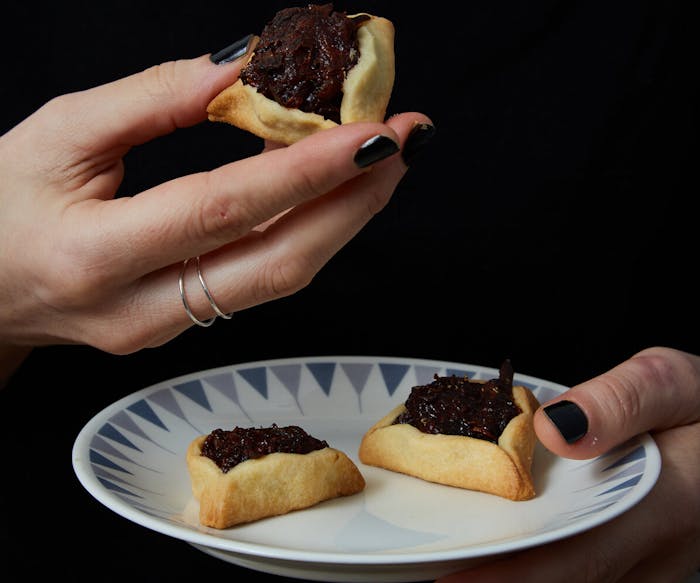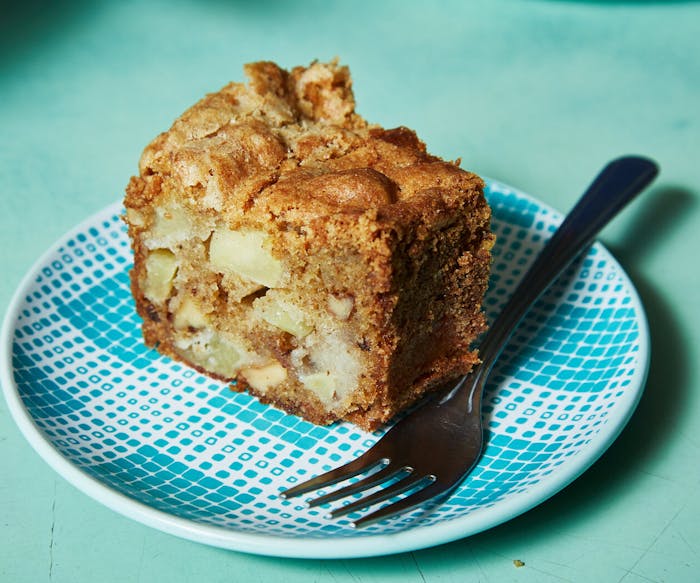Miriam Foster and her family moved around when she was little. Michigan, Ohio, and Maryland were all home for different stints. No matter where they lived, her mother Dinah’s apple cake was on the table. “It’s the cake my mom would make on occasions and non-occasions,” Miriam says. It was eaten as leftovers at breakfast, as a treat after lunch, and served with dinner when guests came for the weekend. And it always makes an appearance at the Thanksgiving table. Dinah’s recipe is a variation on one from the iconic 1982 Silver Palate Cookbook. Her copy of the cookbook easily falls open to the recipe, Miriam says.
Despite growing up around a mother who frequently tucked apple cakes and pies into the oven, Miriam didn’t learn to bake until she was a young adult. At 19, she brought her then-boyfriend Grayson home for the first time. After a meal of Dinah’s macaroni and cheese and apple pie, Miriam remembers Grayson telling her: “If you learn to bake as your mom does, I will marry you.”
“If you learn to bake as your mom does, I will marry you”
For Hanukkah, Dinah gave Miriam a copy of The Joy of Cooking and taught her a bit about baking, which got her started. In college, preparing to graduate with an art degree during the recession, Miriam baked a pie for her guidance counselor. As he ate, he said “I know who to call,” Miriam recalls. He helped her find her first job in baking.
Two years later, she and Grayson, who is now her husband, moved to the North Fork of Long Island and through a friend heard that the owner of the Orient Country Store was retiring. With little experience or knowledge of the area, they took a leap and bought the store. They transformed it into a destination bakery and cafe that plies guests with sandwiches and housemade baked goods including a riff on Dinah’s apple cake. Miriam’s swapped mace for nutmeg, and ditched the whole wheat flour and glaze in her rendition, which she sells in mini loaves. “This is one of those rare cakes that improve with age,” Miriam says, but with lines to buy it, it never reaches that point at the store. She bakes it in the fall, winter, and spring, to reflect the seasons.
Other recipes at the store also change throughout the year, arriving for their season and then disappearing until the next year. In the late winter, around Purim, it’s hamantaschen that join the pastry case lineup. The community near the store isn’t particularly Jewish, but many neighbors are New Yorkers and know to look for hamantaschen come March. Miriam compares it to an annual circadian rhythm. Her hamantaschen are a riff on a recipe from the New York Times with a flaky and deeply golden dough. Unable to get poppy seed filling to work as she wants it to, Miriam fills some of her hamantaschen with apricot jam and others with dates cooked down with sugar and vanilla.
Today, years after her mom taught her to bake, Miriam says Dinah still influences her approach. Her mother bakes because she loves the acts of baking, serving, and enjoying the pastries herself. “She’s my standard-bearer for that relationship to food,” Miriam says. “I limit myself to recipes I enjoy.”
